Transformerless Capacitor Dropper Power Supply
Contents
I already posted about transformerless power supplies in the article, Transformerless DC Power Supply. Here we will see how to design a capacitor dropper power supply. Capacitor power supplies are simple, low cost and light weight solution for providing dc supplies to circuits which require low currents. It is low cost and light weight since there is no bulky transformers.
Circuit Diagram

The 200mA fuse will protect the circuit from mains during shot circuit or component failures. The 275V MOV (Metal Oxide Varistor) will protect from power supply spikes or surges. The X Rated Capacitor C1 is the core part of this power supply as it will drop the excess mains voltage across it. The excess energy will not dissipated as heat as we are using capacitor dropper instead of resistor. The resistor R1 is the bleeder resistor for capacitor C1. Which will discharge the capacitor when the supply is switch off, so it will prevent any shocks due to capacitor charge. Resistor R2 is provided to prevent excess transient current that can flow when the power supply is switch on.
Diodes D1 ~ D4 constitutes a bridge rectifier which will rectify the input ac power. Among these D1 & D2 are zener diodes. So the rectified output will gets clipped at its zener voltage. Capacitor C2 is the filtering capacitor which will filter the rectified ac voltage.
Working

Working is self explanatory in the above animation. In the positive half cycle diodes D1 & D4 gets forward biased and current flows through the load. Output voltage will be clipped by the zener effect for diode D1. In the negative half cycle diodes D2 & D3 gets forward biased and the output voltage will get clipped by the zener effect of diode D2.
Design
Maximum Current
Current I = V/Z, where V is the voltage and Z is the impedance.
Capacitive Reactance XC1 = 1/(2πfC), where f is the frequency and C is the capacitance.
- XC1 = 1/(2 x 3.14 x 50 x 680 x 10-9) = 4683Ω
- X1 = XC1 // R1 = (XC1 x R1)/ (XC1 + R1) = (4683 x 470 x 103)/ (4683 + 470 x 103) = 4637Ω (Parallel Resistances)
- Zener Voltage, Vz = 12V
- Vin = 230V
- Diode Drop, Vd = 0.7V
- I = (Vin – Vd – Vz)/(X1 + R1) = (230 – 0.7 – 12)/(4637 + 100) = 0.046A = 46mA.
Component Ratings for 12V, 40mA Supply
- As per the above calculations, C1 = 680nF, 400V
- VX1 = X1 x I = 4637 x 0.046 = 213.3V
- PR1 = I2R = V2/R =(213.3)2/470,000 = 0.1W
- R1 = 470KΩ, 0.25W
- PR2 = I2R = (0.046)2 x 100 = 0.2116W
- R2 = 100Ω, 0.5W
- Zener Diode Power, Pz = Vz x Imax = 12 x 0.046 = 0.552W
- D1, D2 = 12V, 1W Zener
- D3, D4 = 1N4007, since 1000V PIV
Note : It is better to choose power ratings of resistors greater than the double of the dissipated power.
Experiments
In our experiment we used resistors with higher rating than we got in calculation. You don’t need to use this much big resistors. Here we used a load resistor of 300Ω to test the current driving capability.

Output Voltage = Vz – Vd = 12 – 0.7 = 11.3V

Warning
Don’t try this circuit if you don’t have much experience with electronics. Care should be taken while testing or using this circuit. Don’t touch at any points of the circuit since some points of this circuit is at Mains Potential. After constructing and testing, enclose the circuit in a metal casing without touching PCB and metal case. The metal case should be properly earthed to avoid shock hazards.



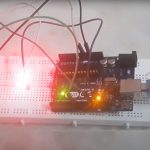


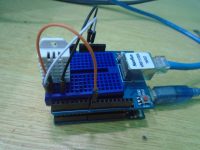

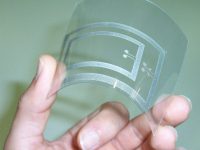

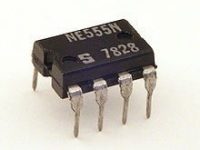
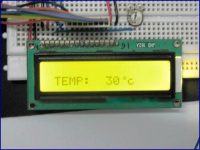
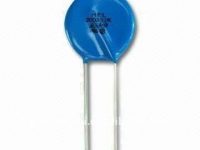
hi, i want build 12v 10amp power supply, but based calculation above, capacitor i must use is ridiculous
V = I x R
R = V / I
R = (230-0,7-12) / 10
R = 217,3 / 10
R = 21,7 ~~ = 22ohm == Xc1
Xc1 = 1/(2πfC)
C = 1/(2 π f Xc1)
C = 1 /(2 x 3,14 x 50 x 220)
C = 1 / 69080
C = 0,00001447596F
C = 14.47596uF
see?? Ridiculous! There no mylar, MKM, MKP with value above 2uF
But i am looking at computer PSU, accumulator charger any powersupply/charger/adaptor with high current and they only use 100n,680n,1uf, how can they increase current??
From an electrical safety point of view it is extremely dangerous to use a transformerless supply, because there is no isolation between the mains input and the DC output.
The size of transformer required for these low current projects is very small and worthy of the expense.
Please do not enclose this circuit in a metal box – that is too risky.
Items like this need to be enclosed in an insulating container made of ABS or better still polycarbonate to provide better mechanical protection.
Put a 240R load on it
Capacitor is a reactive component, it won’t dissipate energy like a resistor.
That’s a cool circuit. I have wondered weather voltage dropping with an AC capacitor would dissipate lots of waste heat and be inefficient.
So, if you can get 40mA out of this circuit, does that mean the input mA is around 2.5mA and does this circuit have around 80% voltage conversion efficiency?
I am not an expert in this but I think we should be good using RMS value.
With peak we will get the maximum value at a particular instant, similarly there is a minimum value also. So I think while using RMS value we will get continues average power dissipation.
230V is RMS value, the V peak could go up to 230 X 1.4142 = 325V , is not you VR1 voltage too low ?
It will still give you approximately 12V, since we are using zener diode regulator.
Dear Sir,
What will happen if Load is decreased ( Open load resistance)?
How did you arrived at value 2.2uF ?
Thanks for the info, I have updated the article.
Hi Sir
I think in your analysis line 1 D1&D2 must be changed to D1&D4. Is that right ?
Thank you for your knowledge sharing.
I have used 2.2 uF 400V poly. capacitor for dropping down the AC voltage to 24 volt 100 mA.
But output after capacitor and bridge rectifier is DC 220 V 100 mA.
Input voltage is 240 V AC.
why it is 220V instead of 24V?
I don’t think the warning goes far enough.
DON’T TREAT THIS AS A NORMAL POWER SUPPLY. THIS IS AN EXTREMELY DANGEROUS METHOD FOR DIY PROJECTS. DON’T USE IT UNLESS YOU KNOW WHAT YOU ARE DOING. IT COULD KILL YOU OR OTHERS.
Use a transformer. It could save your life.
i m using 684pf , 400v capaacitor… can it provide 12 v also? and can it on 12v relay / 6v relay circuit . please reply asap.. 🙂
what will the output if we use 1.5uf 450VAC AC motor capacitor
Many Thx for ur reply.
Can I multiply this circuit and connect it Parallely to obtain max current/ Amp .pl advice
just increase the value of x-rated capacitor to its maximum value of 1uf
the maximum current that can be achieved with this type of circuit is 300ma, to get this current you have to use higher value capacitor which is 1uf(105).
Dear sir , kindly advise a design for 12v with 35amp for led module .
it is depends on your load.that how much it consume
how to know what fuse is needed in the circuit.
how do we increase the o/p current